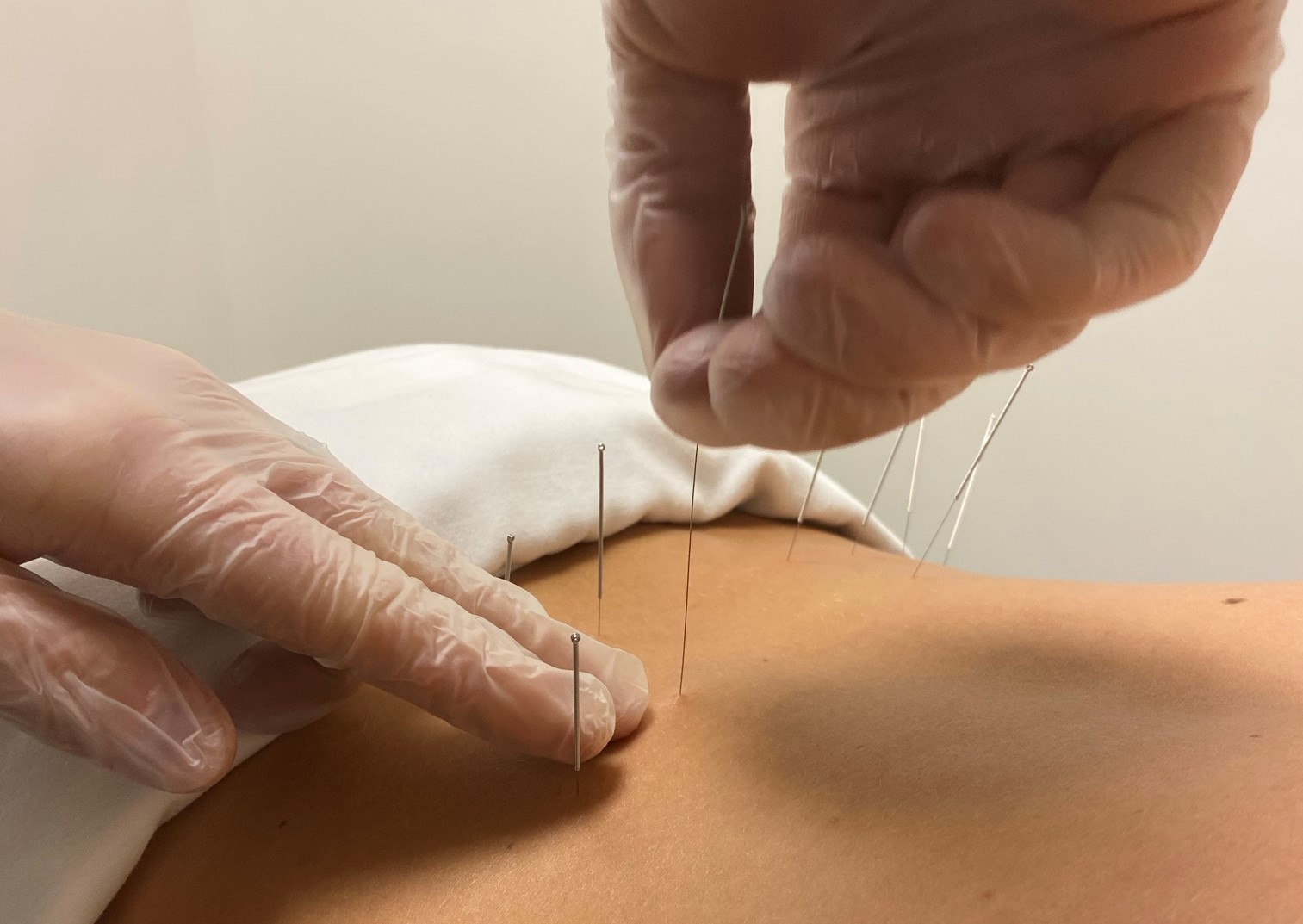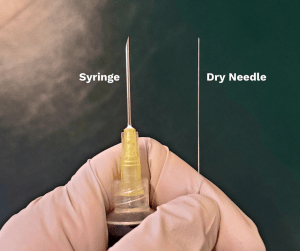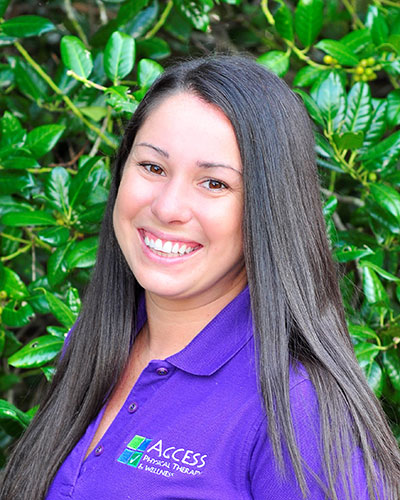Dry Needling

Since more and more of our therapists are becoming certified in dry needling, we are getting bombarded with curiosity from patients, friends, and family. What exactly is it? Does it hurt? Who can benefit from it? Is it the same as acupuncture? Well folks, here’s the 4-1-1!
What is dry needling?
Dry needling is the use of a thin needle (a totally itty-bitty needle) that is advanced into the soft tissue of a trigger point to cause a healing and relaxation response. It is called “dry” needling because unlike injections, there is no solution used. The goal of the treatment is reducing pain and increasing function. Our bodies tend to develop areas of tightness, tenderness, and hypersensitivity in response to various stresses. These stresses can be physical, psychological, or emotional in nature – and let’s be honest, 2020 piled the stress on.
Does it hurt?
 Each patient has different experience with dry needling. It depends on the patient’s condition and what tissues are being treated. However, let’s talk about typical response. The majority of patients do not feel the needle penetrate the skin. This is because the needle is so thin (check out that picture comparing the needle to a syringe). So don’t think of getting blood drawn or getting a tattoo. These are different needles.
Each patient has different experience with dry needling. It depends on the patient’s condition and what tissues are being treated. However, let’s talk about typical response. The majority of patients do not feel the needle penetrate the skin. This is because the needle is so thin (check out that picture comparing the needle to a syringe). So don’t think of getting blood drawn or getting a tattoo. These are different needles.
Some patients may feel a cramping sensation of the involved muscles that usually lasts seconds to minutes. This can occur with an involuntary muscle jump/twitch and is called a local twitch response (LTR). I personally like to yell “BULLSEYE” when this occurs because this means we are hitting the involved muscle group and positively affecting the desired tissue. As the needle remains in the tissue, the sensations subside fairly quickly, and the majority of patients don’t realize the needles are still inserted.
The needles used are very thin but can be very long (up to 6 inches). The reason for this is deep dry needling produces the most optimal outcomes. Think of your body as a 7-layered cake: we have multiple layers of muscles and tissues. Many soft tissue techniques only hit the icing or the first few layers of the cake. Utilizing long needles allows us to hit all 7 layers and truly impact the involved tissues.
Who can benefit from it?
Our certified physical therapists use the dry needling technique to treat both acute and chronic orthopedic and neuromuscular conditions. It is successfully being utilized for a variety of conditions including but not limited to low back pain, arthritis, fibromyalgia, plantar fasciitis, tennis elbow, rotator cuff tendonitis and many other common musculoskeletal conditions. It’s a favorite treatment option among professional athletes and weekend warriors as well as our Veterans who suffer from chronic pain.
How is dry needling different from acupuncture?
Many believe dry needling and acupuncture are the same – mostly due to the similarities between the needles used. However, that is where the similarities stop. The processes, underlying theories, and purposes are quite different. Dry needling requires a medical diagnosis of the problem or condition where acupuncture does not. A full medical examination by our physical therapist is imperative to understand the anatomy, determine the origin of pain, and needle placement. Dry needling is a modern, science-based intervention based on medical research and principles. Acupuncture is a traditional Chinese medicine procedure, with the purpose of altering the flow of energy. Dry needling directly treats the neuromuscular system to reduce muscle tightness and improve joint mobility and pain.
Scheduling an appointment in any of our North Carolina locations is incredibly easy – just give us a call, we’d love to help. Physician referrals are welcome, but not required.


